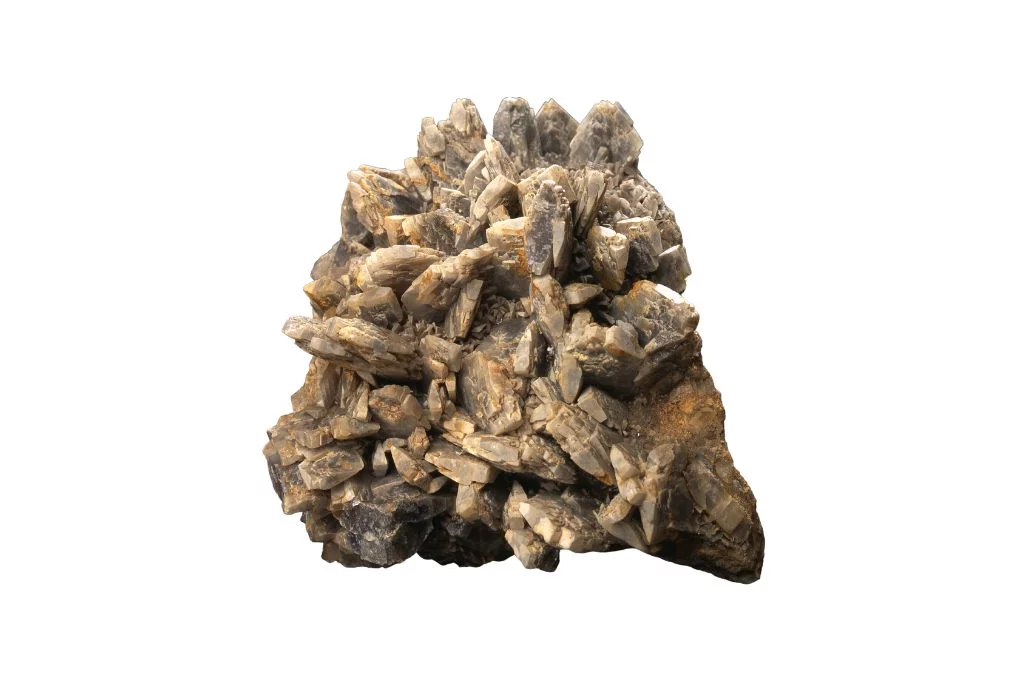Physical Appearance of Barite
Barite is a mineral that captivates with its diverse range of colors and distinctive crystal structure. This mineral typically occurs in tabular or prismatic crystals, often forming rosette-like clusters or blade-shaped aggregates. Barite crystals can vary significantly in size, from tiny, barely visible specimens to large, impressive formations that can reach several feet in length.
Color Variations
One of the most striking features of barite is its wide array of colors. While it is most commonly found in white or colorless varieties, barite can also appear in shades of yellow, brown, blue, green, and even red. Some specimens exhibit a beautiful pale blue hue, which is highly prized by collectors. The color variations are often due to the presence of impurities or trace elements within the crystal structure.
Crystal Structure and Habit
Barite’s crystal structure is orthorhombic, meaning it has three unequal axes at right angles to each other. This structure gives rise to its characteristic tabular or prismatic crystal habits. The crystals often display perfect cleavage in three directions, which can result in rhombic fragments when broken. In some cases, barite forms as stalactitic or globular masses, adding to its visual appeal and diversity.
Unique Physical Properties
One of the most notable characteristics of barite is its high specific gravity, which makes it remarkably heavy for its size. This property is due to the presence of barium in its chemical composition. Barite also exhibits a pearly to vitreous luster, which can give it a glass-like appearance when polished. Some specimens even display phosphorescence or fluorescence under ultraviolet light, adding an extra dimension to their visual appeal.
Historical and Cultural Significance of Barite
Barite, also known as baryte or heavy spar, has been used by humans for centuries. Ancient Egyptians used ground barite as a pigment in white paint for tombs and hieroglyphics. During the Middle Ages, alchemists believed barite possessed magical properties due to its high density. In more recent history, Native American tribes used barite in ceremonial practices and as a component in sacred objects.
Metaphysical Associations
In metaphysical circles, barite is associated with enhancing communication, particularly with higher realms or spiritual entities. It is believed to promote clarity of thought and aid in decision-making processes. Some practitioners use barite for grounding and protection, claiming it can create a shield against negative energies. The stone is also thought to stimulate the third eye chakra, potentially enhancing intuition and psychic abilities.
Common Uses and Applications
Barite’s most significant modern application is in the oil and gas industry, where it is used as a weighting agent in drilling fluids. Its high density helps control pressure in oil wells during drilling operations. In the medical field, barite is used as a contrast medium in X-ray imaging of the digestive tract. The automotive industry utilizes barite in brake and clutch linings, while it also finds applications in the production of paints, plastics, and rubber. In the realm of radiation shielding, barite concrete is used in the construction of hospitals and nuclear facilities.
Benefits and Believed Properties
Beyond its industrial uses, barite is believed to offer various benefits to those who work with it or keep it nearby. Some claim it can help alleviate stress and anxiety, promote restful sleep, and enhance overall well-being. In crystal healing practices, barite is sometimes used to address issues related to the skeletal system and bone health. Its grounding properties are thought to help balance emotions and provide a sense of stability during times of change or uncertainty.

